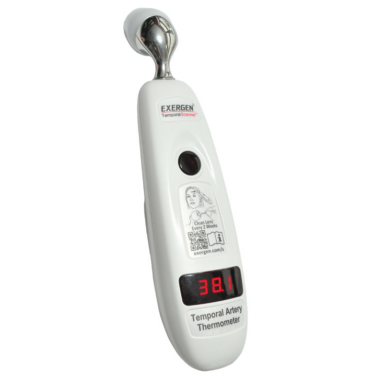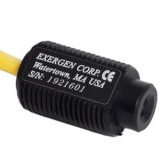When supplying blood to patients it is essential that the blood’s temperature is carefully warmed to 37°C to ensure patient safety and wellbeing.
Blood must be warmed to this temperature prior to infusion, because, depending on its source, the blood can be at room temperature, refrigerated or any temperature in between. If the infused temperature is too low or too high, the risk of hypothermia or hyperthermia increases, presenting possible complications or even patient shock.
To ensure that the correct blood temperature is maintained from start to finish, the amount of heat applied to the blood must be tightly controlled and be adjusted to the flow and inlet temperature of the donor blood. The foundation of efficient and effective blood temperature management is a well-controlled heat exchange and a reliable temperature measurement mechanism.
The Optimal Solution
For a variety of reasons, it’s preferable to measure blood temperature non-invasively. Non-contact temperature sensors are ideally suited to this application and have many advantages over invasive sensors, chief among them the fact that sterility is guaranteed as the sensor has no contact with the bloodstream. Additionally, while contact sensors are disposable, non-contact sensors can be re-used, which amounts to big cost savings. Non-contact sensors are mounted at critical locations in the perfusion system, allowing very easy and fast ‘click-on’ of disposable tubing, which is critical in trauma situations.
Why Exergen IR Non-Contact Sensors?
Exergen has developed a special sensor, called the heat balance sensor, which measures blood temperature through the tubing. This sensor provides the accuracy and reliability required for the best possible heating control in the perfusion system, ensuring optimal safety for the patient.
Exergen Infrared temperature sensors also have a unique (patented) method of compensating for ambient temperature fluctuations to minimize their effects on the reading and guarantee temperature measurement continuity. Whether the perfusion equipment is used in an ambulance, in an air-conditioned operating room, or under harsh military conditions, Exergen sensors provide accurate control.
An additional benefit to using Exergen’s non-contact sensors is the fact that they do not need any calibration. These sensors are passive devices that have no drift — not in 1 year and not in 10 years. Exergen sensors are also interchangeable (interchangeability error +-1%) so if a sensor ever needed to be replaced due to, for example, mechanical damage, a new sensor can be ordered with exactly the same specifications, allowing a simple drop-in replacement, with no programming or calibration required.
Commercial Advantages
– Guaranteed patient safety under all conditions
– Non-invasive and therefore sterile
– Re-useable solution for greater cost-effectiveness allows for very fast system operation in critical trauma situations
– The sensor does not need service or calibration in the field, saving costs and increasing reliability





